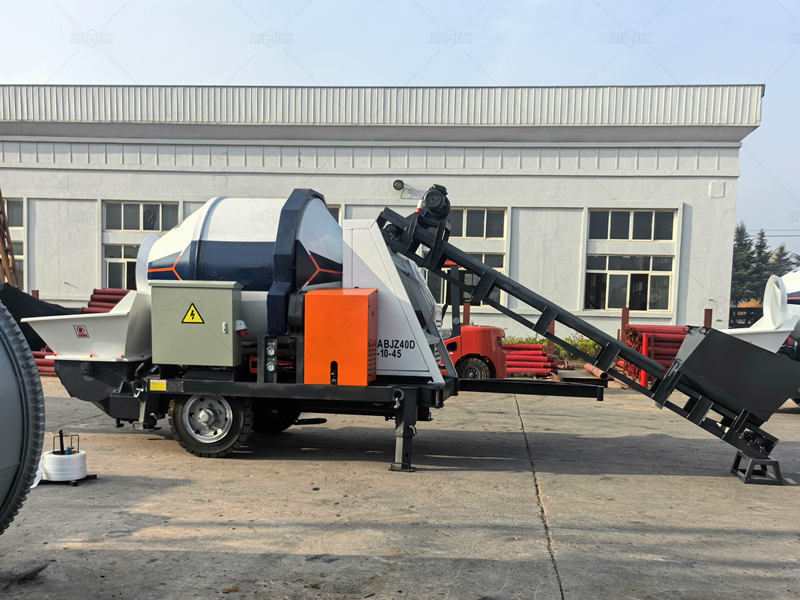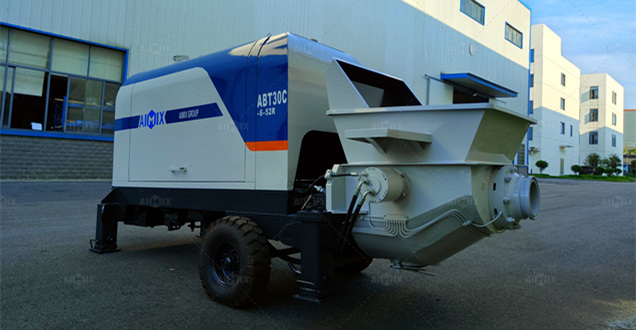The Growing Demand for Concrete Pumps in South Africa
The construction industry in South Africa has been experiencing steady growth, driven by the need for new housing, infrastructure upgrades, and large-scale commercial projects. Concrete pumping technology has played an essential role in this development because it allows for faster and more precise placement of concrete compared to traditional manual methods. Among the many options available in the market, contractors often find themselves comparing the practicality of a mobile pump concrete with the long-term reliability of a stationary concrete pump. At the same time, smaller machines like the mini concrete pump have also carved out a niche for projects that require portability and easy maneuvering. Deciding which type of machine is more popular in South Africa depends on factors such as project scale, cost efficiency, site location, and overall construction demands.

The Rise of Mobile Pump Concrete in South Africa
One of the major reasons why mobile pump concrete has gained popularity in South Africa is its flexibility. Many construction sites in South Africa are spread out across urban and semi-urban areas where quick mobility is necessary. A mobile pump allows contractors to move the equipment from one project site to another without excessive logistical challenges. For instance, a housing developer working on multiple sites in Johannesburg or Durban can transport a mobile pump to each location without investing in several machines. This portability saves both money and time, making mobile pumps a practical choice for small to medium-sized contractors.
Moreover, mobile pumps are particularly effective in projects where access to the construction site is limited. South Africa has many residential zones with narrow roads or congested areas, and a mobile pump is easier to maneuver in such conditions. In these settings, a stationary system might be too cumbersome to install, while a mobile pump can simply be positioned, operated, and then moved to the next job. The versatility of mobile pumps has made them a favorite among contractors who handle diverse projects with varied site conditions.
The Reliability and Strength of Stationary Concrete Pumps
On the other hand, the stationary concrete pump has a strong following in South Africa, especially for large-scale projects. Unlike mobile pumps, stationary systems are designed for heavy-duty performance and can pump concrete over long distances and heights. They are commonly used in massive infrastructure projects such as bridges, high-rise buildings, and large commercial facilities. Contractors prefer stationary pumps for these kinds of projects because they deliver consistent performance and handle large volumes of concrete without interruption.
Another advantage of the stationary concrete pump is its durability. Once installed on-site, it provides reliable pumping capacity for the duration of the project, which is often months or even years. For example, the construction of a new hospital wing in Cape Town may require a stationary pump to ensure concrete is delivered to multiple floors without delays. Although the initial setup is more complex and requires pipeline installations, the efficiency it brings to long-term, large-volume projects makes it worth the investment.
The Role of Mini Concrete Pump in South Africa
While mobile and stationary pumps dominate most discussions, the mini concrete pump also plays a role in South Africa’s construction landscape. These smaller pumps are especially popular in rural areas where large machines cannot easily be transported or where projects involve limited-scale pouring, such as farm structures, driveways, or small foundations. Mini pumps are cheaper to operate and require less manpower, making them ideal for small contractors or individual builders. Although they are not directly competing with mobile or stationary pumps, they fill a critical gap in the market and add diversity to the available pumping options.

Comparing Cost and Accessibility in the South African Market
When comparing popularity, cost plays a significant role. Many contractors in South Africa, especially small to mid-sized companies, cannot always afford the high upfront investment in a stationary concrete pump. These machines not only have a higher purchase price but also require more complex installation and maintenance. In contrast, mobile pumps are relatively more affordable and versatile, which explains why they are widely adopted by companies operating in both urban and semi-urban regions.
Accessibility also influences popularity. The South African market has a robust supply of concrete pump South Africa distributors offering mobile units, spare parts, and after-sales service. Contractors find it easier to maintain and repair mobile pumps due to this local availability of support. Meanwhile, stationary pumps, though highly effective, often rely on specialized technicians and imported spare parts, which can increase downtime and costs.
Project Scale as a Decisive Factor
Popularity often depends on the scale of projects being undertaken. For smaller residential and commercial developments, the mobile pump concrete dominates because it aligns with the fast-paced nature of such work. Contractors working on quick turnaround projects prefer machines that can be set up and relocated with minimal effort. Conversely, when it comes to major infrastructure projects funded by the government or large corporations, the stationary concrete pump tends to be the equipment of choice. These projects demand long-term efficiency and the ability to handle massive volumes of concrete, where mobile pumps may fall short.
Which One is More Popular Overall?
Taking all factors into account, the mobile pump concrete is currently more popular in South Africa when judged by the number of units in use across the country. Its portability, lower cost, and ease of maintenance make it a practical choice for the majority of contractors working on housing and commercial projects. However, this does not diminish the value of the stationary concrete pump, which remains the go-to solution for high-capacity infrastructure projects. Both pumps serve important but different roles, and the choice between them depends on whether the contractor prioritizes flexibility or heavy-duty capability.
Final Thoughts
In conclusion, South Africa’s construction industry benefits from a diverse range of pumping solutions, from the highly portable mini concrete pump to the powerful stationary concrete pump. While both mobile and stationary pumps are essential, the mobile pump concrete is more widely used because it suits the fast, flexible nature of most projects across the country. Contractors evaluating which pump to choose should always consider project size, budget, and site conditions. Whether working on small residential developments or massive infrastructure projects, selecting the right pump ensures efficiency, cost savings, and timely completion — key factors in South Africa’s evolving construction landscape.